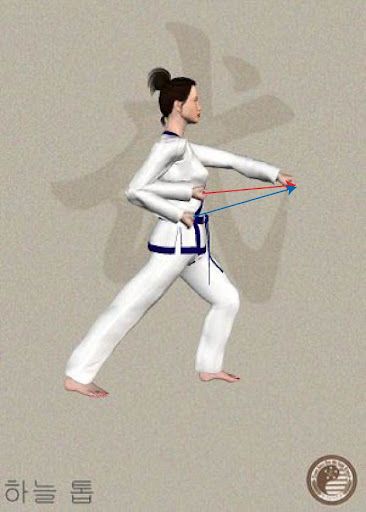Thanks for the replies, everyone. I did find the following image which may help clarify. Notice that the fist is well above the belt. I found similar images associated with Hwang Kee's Soo Bahk Do Vol. 1 book, suggesting this may indeed be a Moo Duk Kwan thing (or at least used to be).

Does anyone currently use this high fist position? Or was anyone instructed to do it in the past?
Thanks,
Chris
This is exactly how we do it at my school. The reasoning I was told is that the fist is held on the level of the solar-plexus, allowing the fist to move in a straight line out in a punch - making for a shorter, faster, more efficient strike. As opposed to holding the fist at the hip and angling upward to strike the solar plexus.



